Art World
Artists Tease Out the Many Meanings of Hair in a New Exhibition
Hair is a medium for exploring notions of gender roles, power, and beauty, and can be seductive or unsettling.
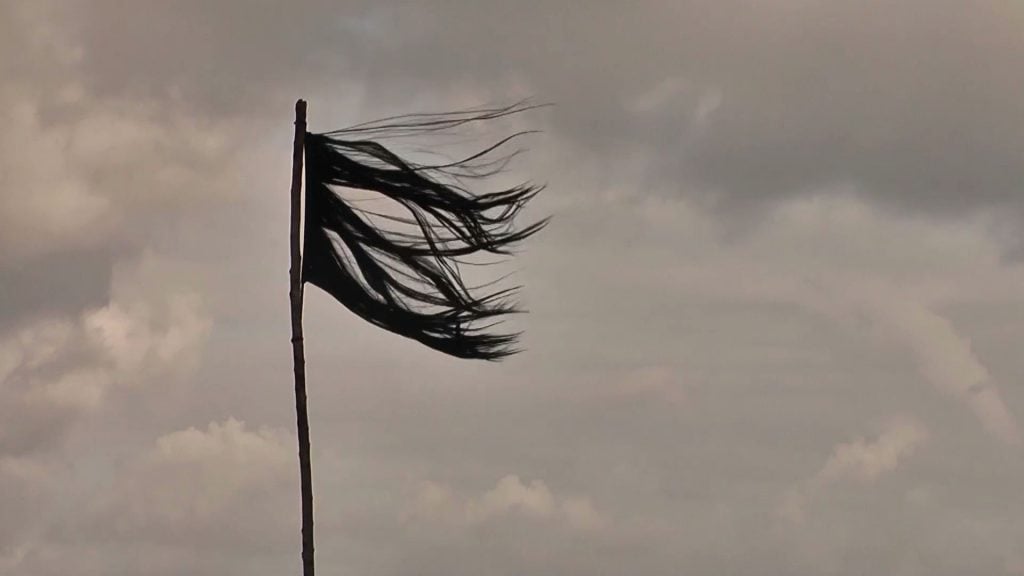
The rich topic of human hair and all its meanings in contemporary art comes in for curatorial consideration in “Hair Pieces,” an upcoming exhibition at the Heide Museum of Modern Art in Melbourne, Australia.
The show features major international artists such as Marina Abramović and Ulay, Janine Antoni, Mona Hatoum, Ana Mendieta, and William Wegman, along with high-profile Aussie artists like Christina May Carey, Patricia Piccinini, and Christian Thompson. Overall, the show includes 33 artists from nine nations, with work spanning the last five decades.
“Intricately socially coded, materially rich and symbolic, hair is everywhere in art and life,” said Heide Museum senior curator Melissa Keys, who organized the exhibition. “Rather than tracing a series of narrow themes the ‘Hair Pieces’ exhibition samples a wide array of ideas and approaches and reflects on the uncanny, strange and alluring presence of hair and its importance to us.”
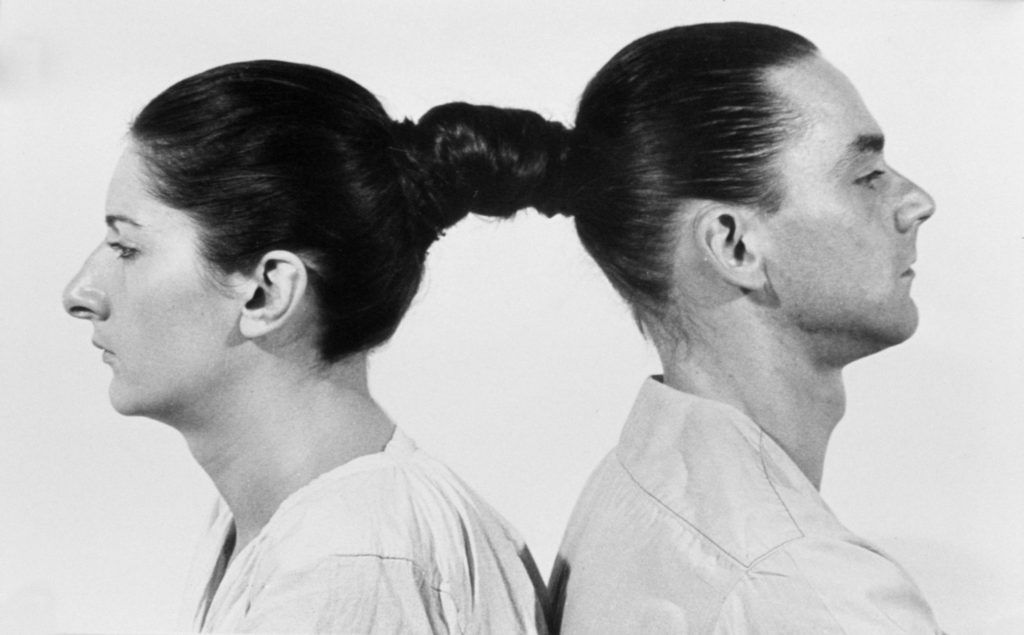
Ulay / Marina Abramović,
Relation in Time (1977). © Marina Abramović and Ulay
Courtesy of the Marina Abramović Archives and LIMA Amsterdam.
To create Relation in Time (1977), which must be one of the best-known works of contemporary art involving hair, Marina Abramović and Ulay sat in private, back-to-back with their long locks intertwined, for some 16 hours before inviting viewers in to an hourlong performance, documented on video. It’s just one example of the artists’ sustained, intimate collaborative practice, which they pursued for 12 years.
Also iconic is Ana Mendieta’s 1972 group of self-portrait photographs Untitled (Facial Hair Transplant). The work features her applying strands of her friend’s beard to her upper lip, one by one, with glue. Whether in private actions or live performances, the artist trenchantly challenged gender construction in modern society.
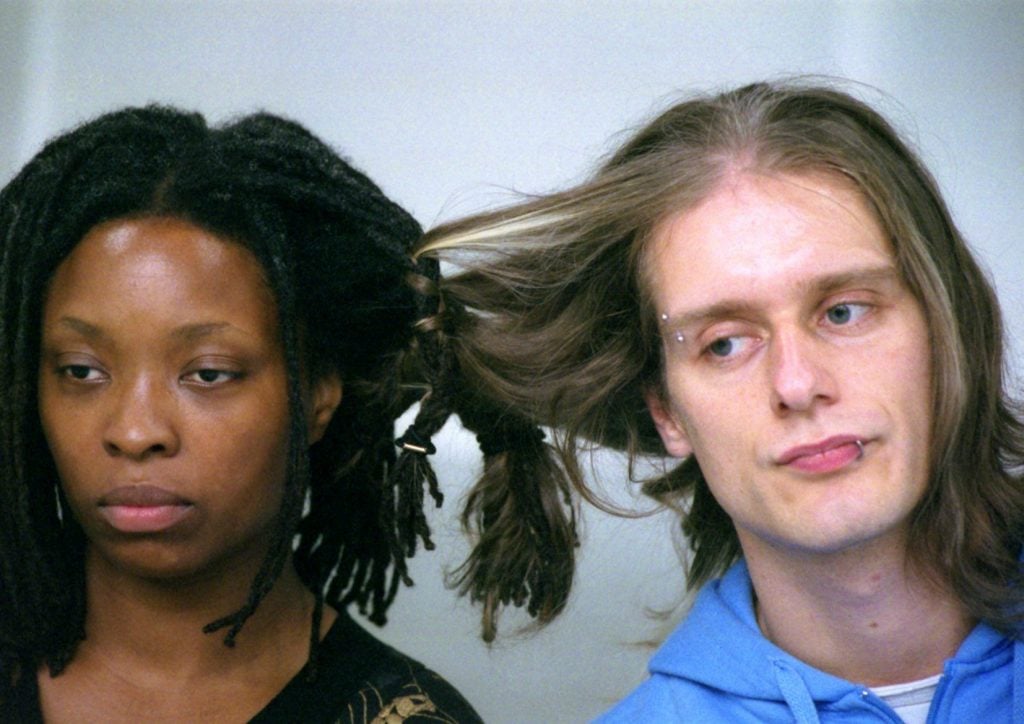
Sonia Boyce, Exquisite Tension (2005). © the artist, Hauser & Wirth.
Sonia Boyce’s video Exquisite Tension (2005) shows the artist braiding together the hair of a Black woman and a white man who sit side-by-side. The reason the artist uses what she calls “the performative,” she has said, “is that I want to engage people in a dialogue between what might be either an object or a situation, and to gain their spontaneous reaction… that’s where the art, probably, is taking place.”
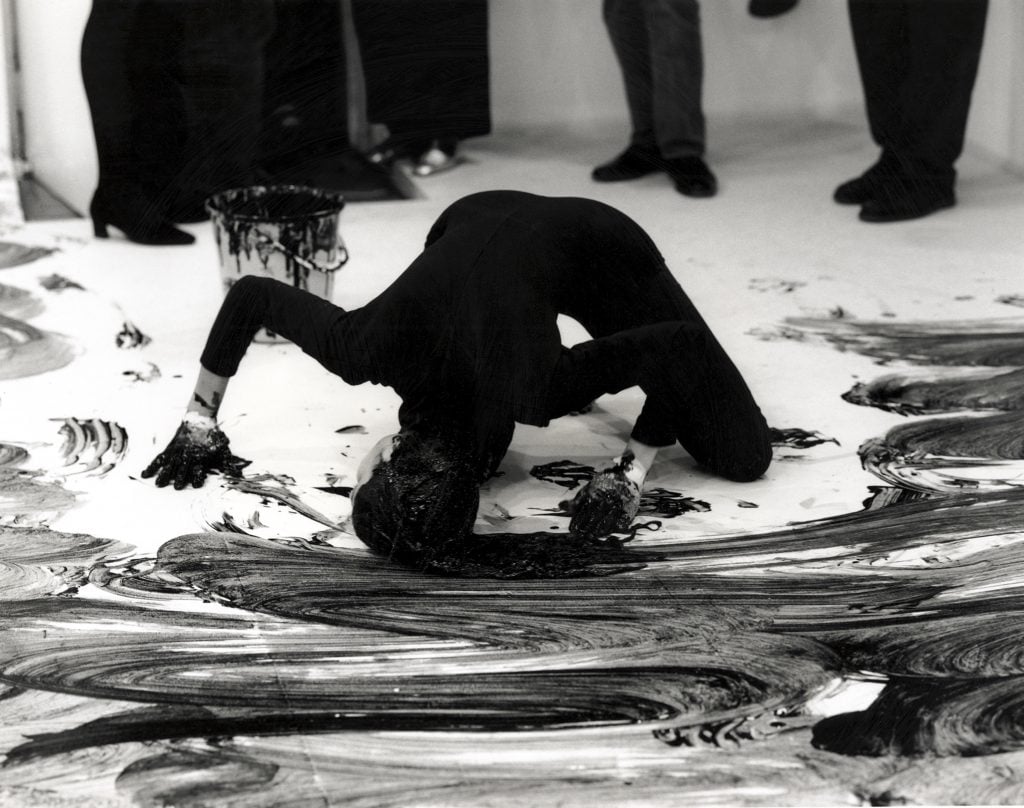
Janine Antoni, Loving Care (1992). © Janine Antoni; Courtesy of the artist and Luhring Augustine, New York.
Janine Antoni recalled both domestic chores and the heritage of Abstract Expressionism in her performance Loving Care (1992), which saw her mopping the floor at London’s Anthony d’Offay Gallery with her head while her hair was soaked in Loving Care–brand “Natural Black” hair dye.
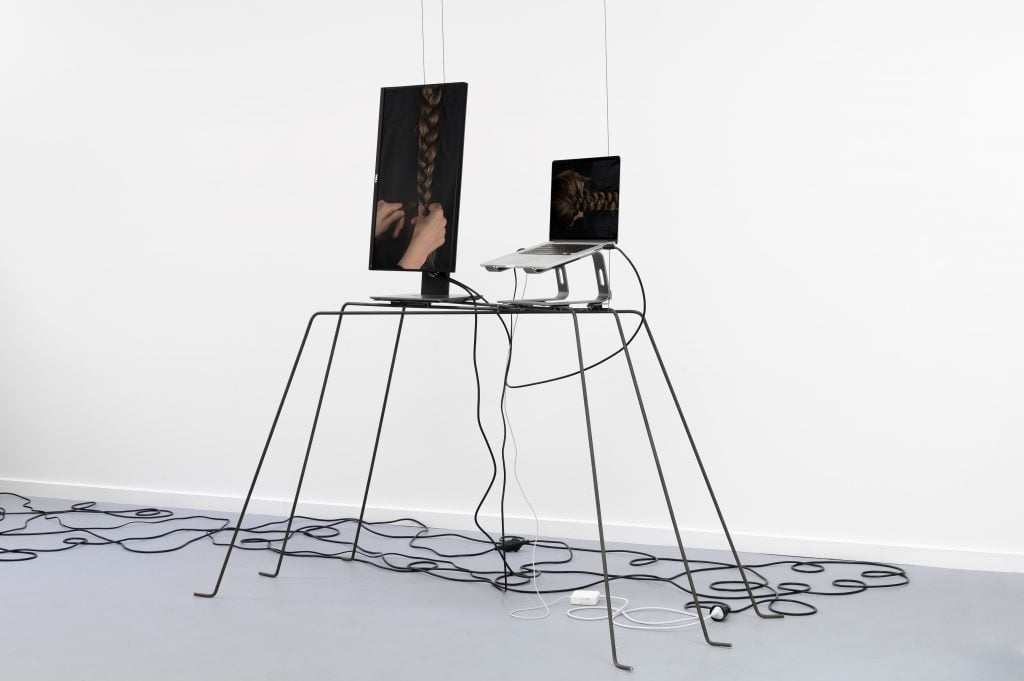
Christina May Carey, Hypnagogia (2021-2024). © the artist
Christina May Carey’s Hypnagogia (2021-2024) consists of a video monitor and a laptop on a custom steel frame, with both screens show a sequence of hair being braided and unbraided. Hypnagogia is the state between wakefulness and sleep, when many people experience visual or aural hallucinations. Some artists and writers have tried to exploit this state to foster creativity.
Belgian artist Edith Dekyndt’s video Indigenous Shadow Part.2, Martinique Island (2014) shows a makeshift pole on which what seems to be a shredded flag, actually created from strands of human hair, has been raised. It was filmed in Côte du Diamant, at the burial place of poet and philosopher Édouard Glissant. The piece refers to a historical event, when a merchant ship, secretly carrying enslaved Africans, went aground nearby.
“Hair Pieces” will be on view at the Heide Museum of Modern Art in Melbourne, Australia, from May 4 to October 6, 2024.





